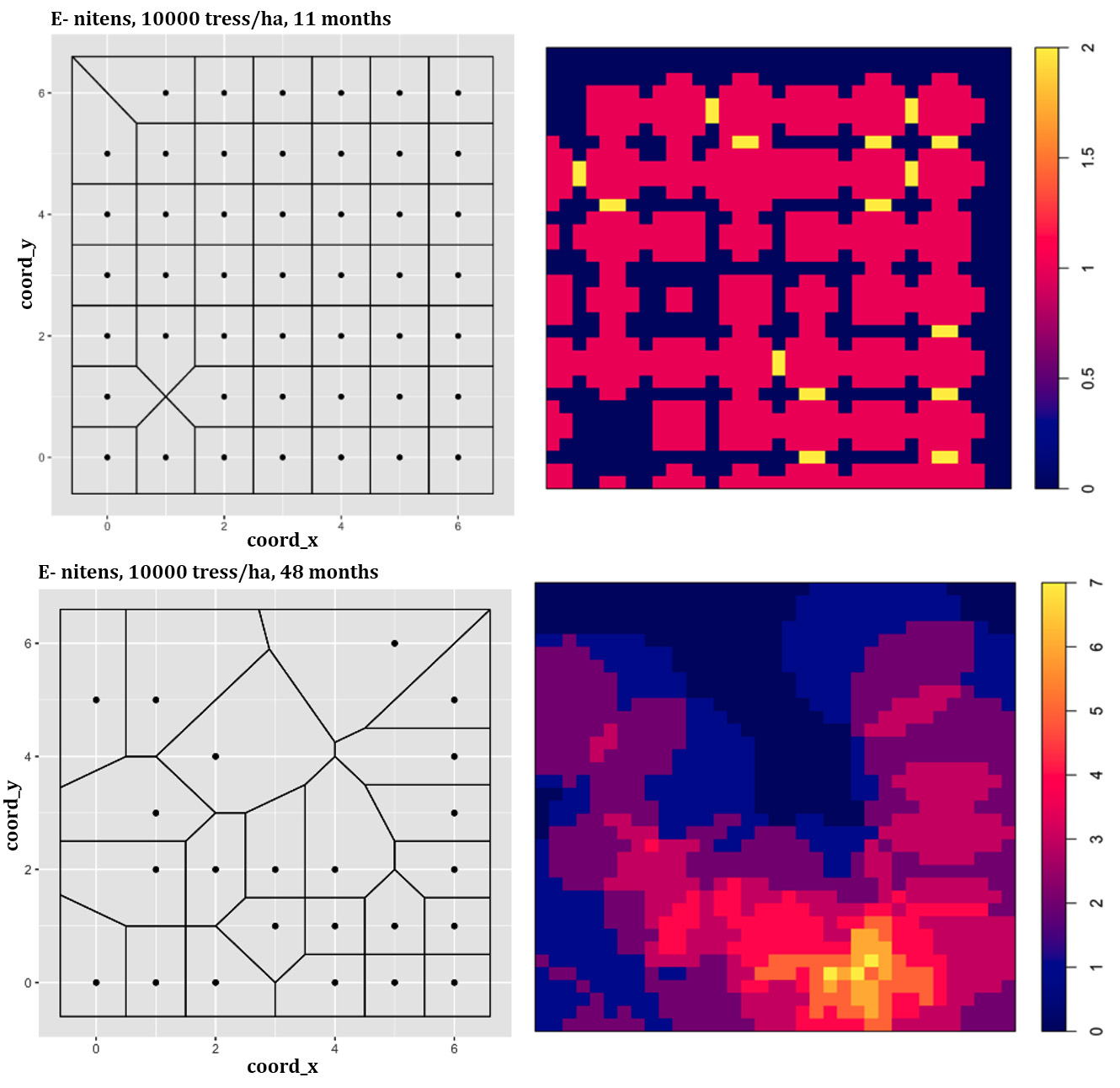Modeling natural mortality for different plant densities in dendroenergetic trials
DOI:
https://doi.org/10.48162/rev.39.048Keywords:
Survival probability models, difference equations, relative mortality rate, dendroenergeticAbstract
Mortality was modelled for three species (Acacia melanoxylon, Eucalyptus camaldulensis, Eucalyptus nitens) at three plantation densities (5000, 7500, and 10000 trees ha-1) in an trial of biomass production for purposes of dendroenergetic. One modelling based on individual tree level and two mortality modelling alternatives were evaluated: four survival probability equations and eight difference equations. The individual tree survival modelling considered a logistic model, is a linear combination of variables to individual tree at current time and the previous time as estimator, being the main variables the variation of the competition index and the variation of basal area growth between the current growth period and the previous growth period. The survival probability alternative used state variables of the stand (age, dominant height, average square diameter) as predictors, whereas the difference equations were adjusted according to age-based changes only. The models to stand levels showed better result than individual tree models, and in general, the mortality models based on difference equations presented better indicators of precision and parsimony. The rate of relative mortality was constant, i.e., (dN/dE)/N, and varied between species, revealing greater mortality, consecutively, in E. nitens, A. melanoxylon, and E. camaldulensis. Although mortality tended to be higher at greater plantation densities, stand density did not significantly affect the parameters of the adjusted models.
Highlights
- The mortality stand level models showed better results than the individual tree models for dendroenergetic crops, and in general, the mortality models based on difference equations presented better precision indicators and parsimony.
- The survival probability alternative involved state variables of the stand like age, dominant height, and average square diameter as predictors, while the difference equations were fitted according to age-based changes only.
- Mortality tended to be higher at greater plantation densities, however stand density did not significantly affect the parameters of the mortality equations.
Downloads

Downloads
Published
How to Cite
Issue
Section
License
Copyright (c) 2018 Revista de la Facultad de Ciencias Agrarias UNCuyo

This work is licensed under a Creative Commons Attribution-NonCommercial-ShareAlike 3.0 Unported License.
Aquellos autores/as que tengan publicaciones con esta revista, aceptan las Políticas Editoriales.










.jpg)




